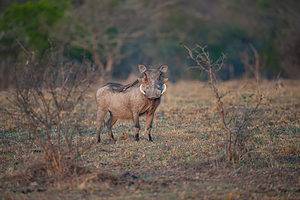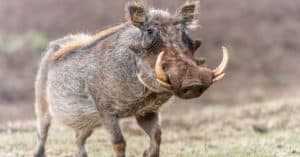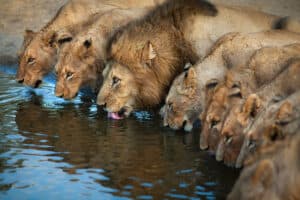Humans have always had a unique relationship with animals, but there is something about mammals that we’ve always connected with. Maybe it’s due to the fact that we are mammals ourselves, but there’s just something about the mammals of the earth that we generally relate to more than a scaly reptile or slimy fish. Even the words used to describe other non-mammalian animals seem different (scaly and slimy). Today, we are going to take a look into the past, specifically that of North America, and learn about the extinct mammals that lived there. Some of them you may have heard of, but others you definitely haven’t! Let’s get started and learn about X extinct North American mammals.
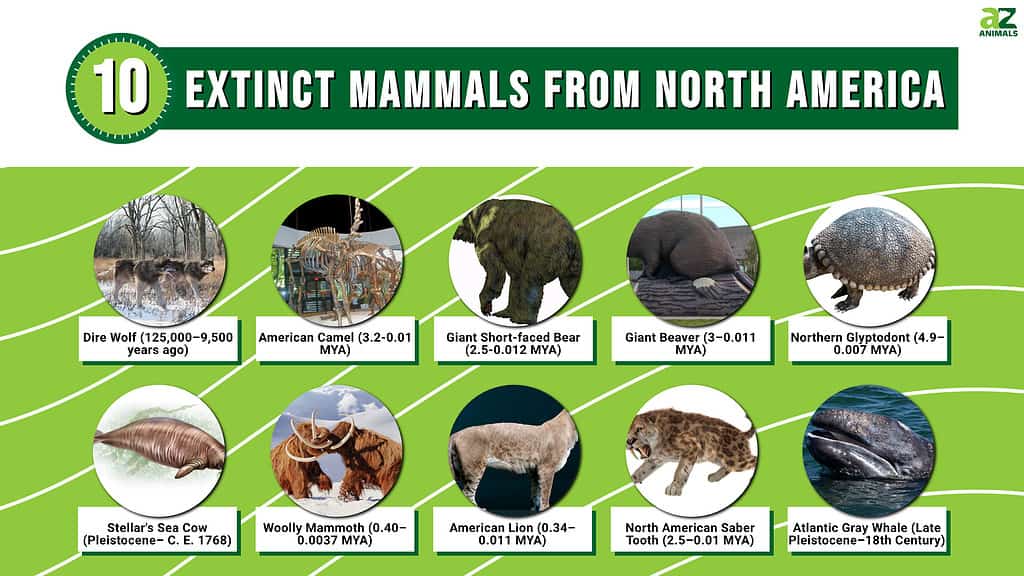
10 Extinct Mammals From North America
Here is our list of 10 extinct mammals from North America! Let’s learn about some of the ancient animals that lived in North America, when and where they lived, and what caused them to go extinct.
1. Dire Wolf (125,000–9,500 years ago)
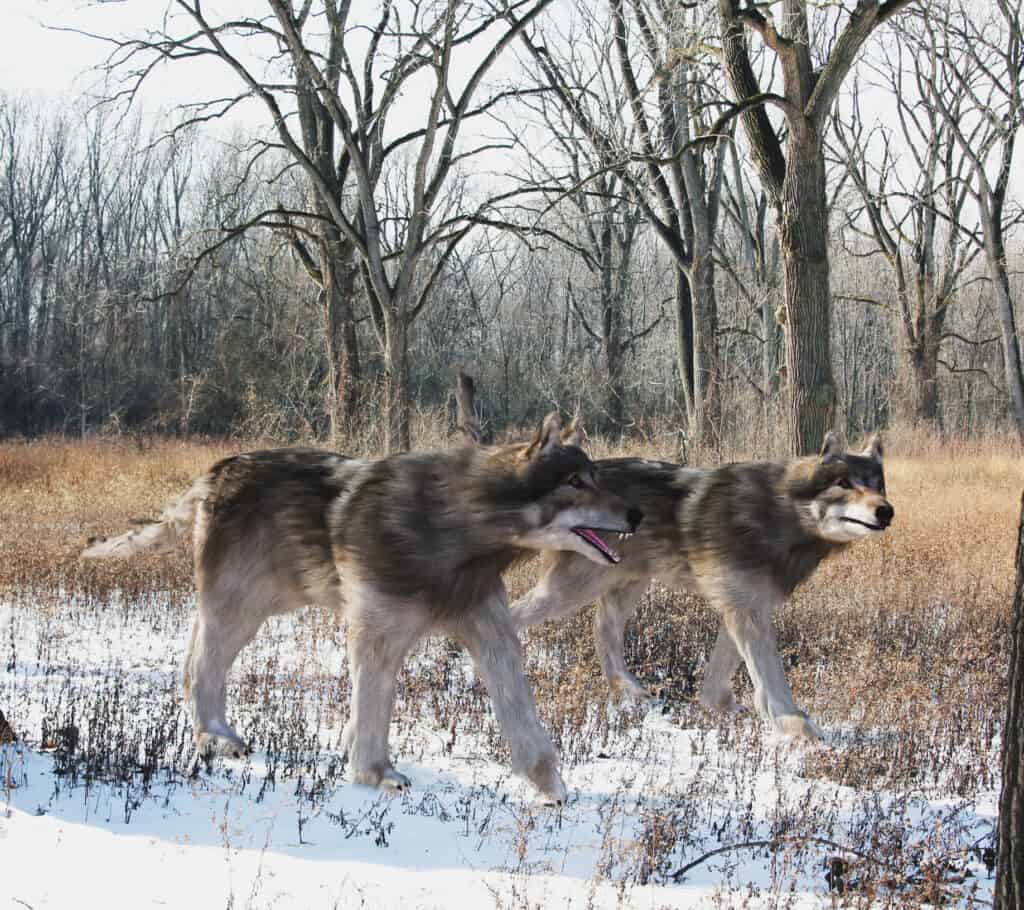
Dire wolves were roughly the size of the extant gray wolf but with a heavier build.
©iStock.com/Aunt_Spray
The dire wolf was a large carnivore that lived in North America during the Late Pleistocene and Early Holocene epochs (125,000–9,500 years ago). Unfortunately, medieval humans didn’t keep them as pets, despite what Game of Thrones depicts! The species was first named in 1858, four years after the first specimen was found in Los Angeles. Most of the modern fossils that we have today come from the La Brea Tar Pits near LA, where many other large species have been documented as well as they got stuck while hunting desperate prey that had also gotten stuck.
The dire wolf was about the same size as the largest modern gray wolf, with two subspecies being officially recognized, although their teeth were much larger than any modern wolf. The dire wolf became extinct during the Quaternary extinction event along with its main prey species. The exact cause of its extinction is not certain, but it may have been due to a combination of factors such as its reliance on “megaherbivores”, climate change, and competition with other species (potentially humans). The latest dated remains indicate that the dire wolf lived as recently as 9,500 years ago.
2. American Camel (3.2-0.01 MYA)
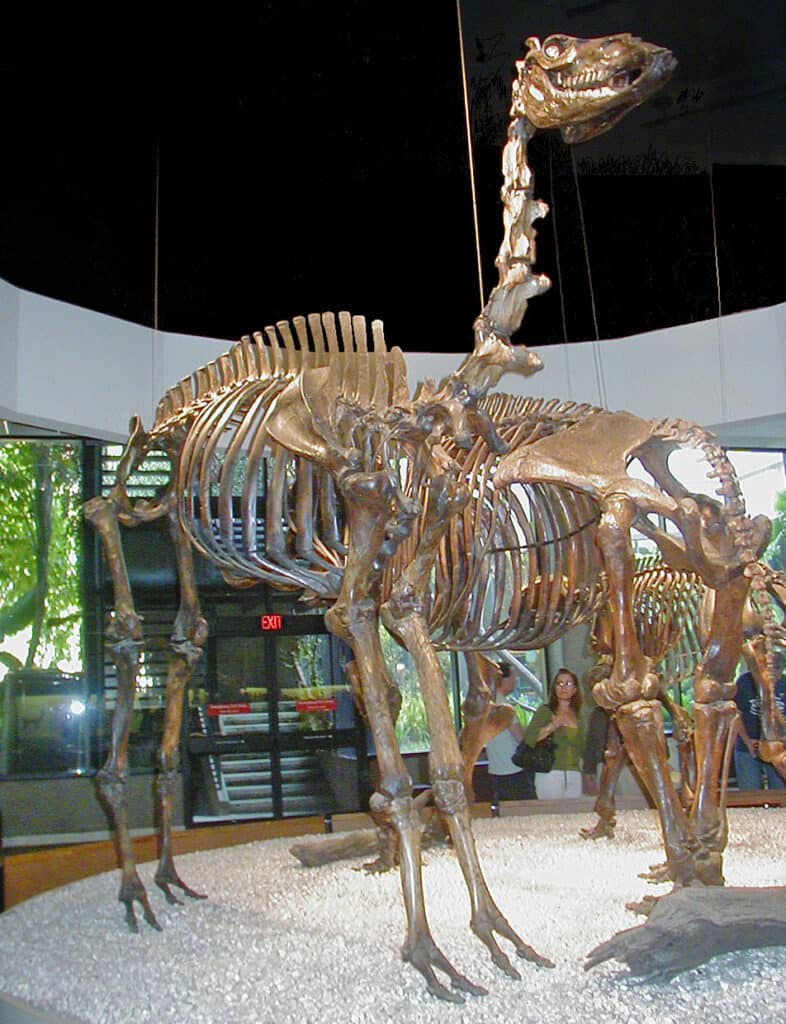
Camelops were an extinct genus of camels that lived across the Americas.
©WolfmanSF / CC BY-SA 3.0 – License
Camelops was a genus of camels that lived in North and Central America. The genus became extinct around 11,000 years ago, meaning they were around during the time that humans lived across North America. These camels are closely related to Old World camels and were the only true camels left in North America before their extinction.
This particular extinction was part of a larger North American extinction event in which other native species, such as horses, mastodons, and other camelids, died out. An interesting fact is that horses originated in North America, crossed the land bridge, went extinct in North America (from the same extinction as the camel), and then were brought back during the colonial period! This huge extinction may have been caused by global climate change and hunting pressure from humans, specifically the Clovis culture, who were known to be big game hunters and used their fluted stone tools for hunting camels.
3. Giant Short-faced Bear (2.5-0.012 MYA)
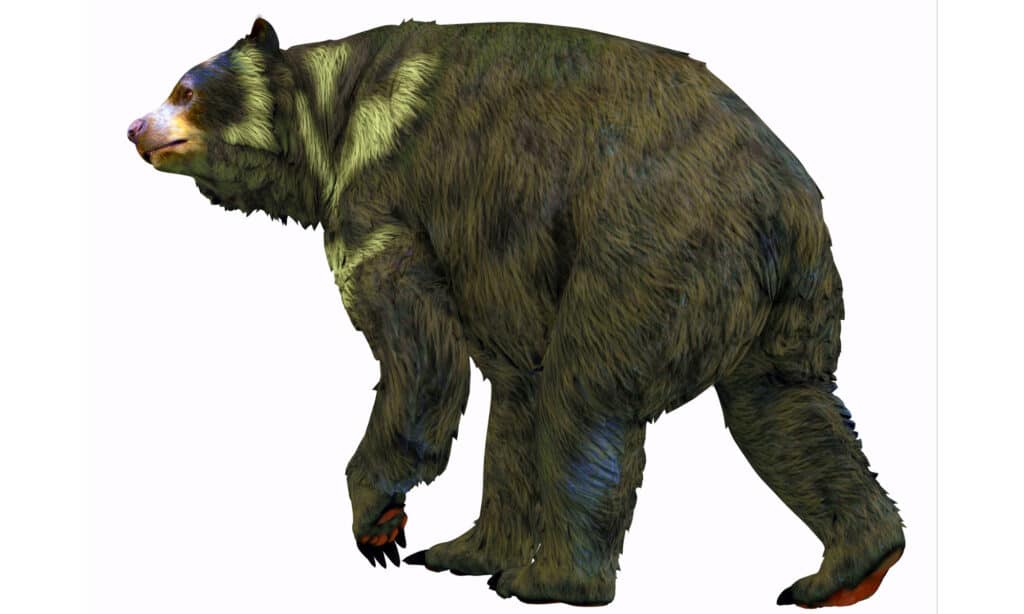
The Short-Faced Bear weighed 2,000 pounds or more!
©iStock.com/CoreyFord
Short-faced bears are an extinct group of short-faced bears that lived in North America during the Pleistocene era: the lesser short-faced bear and the giant short-faced bear. The giant short-faced bear was one of the largest terrestrial carnivorans to have ever lived. The adult males could weigh up to 800 kg and stood an impressive 3 meters tall on their back legs. The lesser short-faced bear was an omnivore and preferred open woodlands, but was also adaptable to different habitats and feeding opportunities. The cause of the extinction of both species isn’t totally clear, but climate change, competition with other bears, and certain food chains collapsing likely played a role.
4. Giant Beaver (3–0.011 MYA)
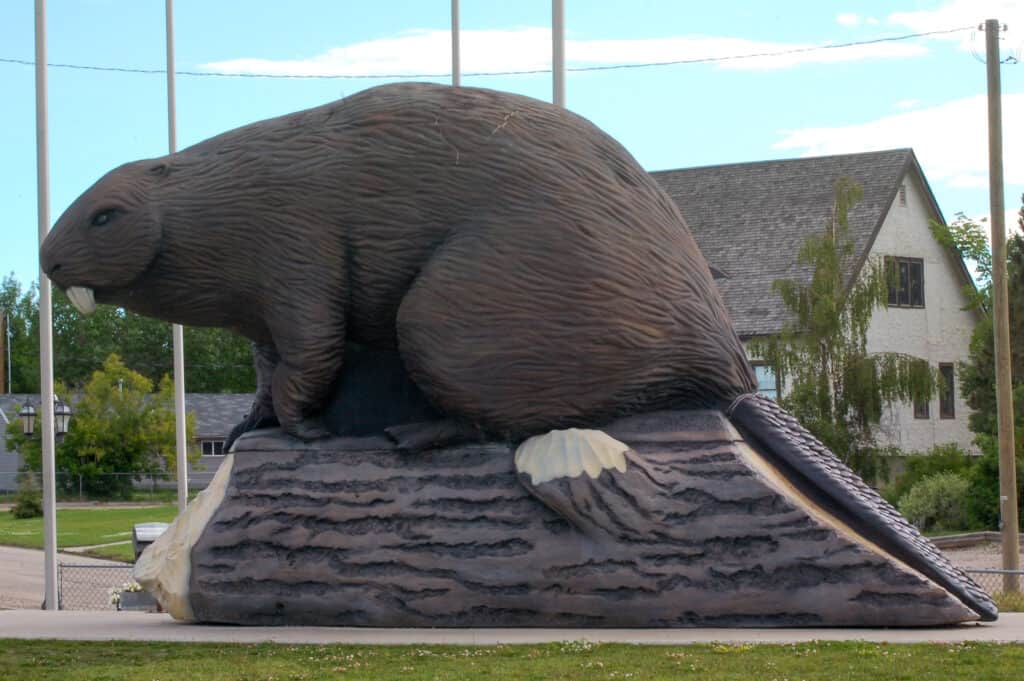
Giant beavers were probably the largest rodent species in North America.
©LP Primeau/Shutterstock.com
The giant beaver, also known as Castoroides, lived in North America during the Pleistocene and was a much larger version of the modern beaver. It could grow up to 7.2 feet long and weigh up to 276 pounds, making it the largest known rodent in North America at the time. The giant beaver had unique incisor (front cutting) teeth that were lined and enameled and were much larger than those of modern beavers. Despite their physical size, giant beavers’ brains were proportionally smaller, which may have resulted in less complex thoughts and behaviors compared to their smaller cousin.
5. Northern Glyptodont (4.9–0.007 MYA)
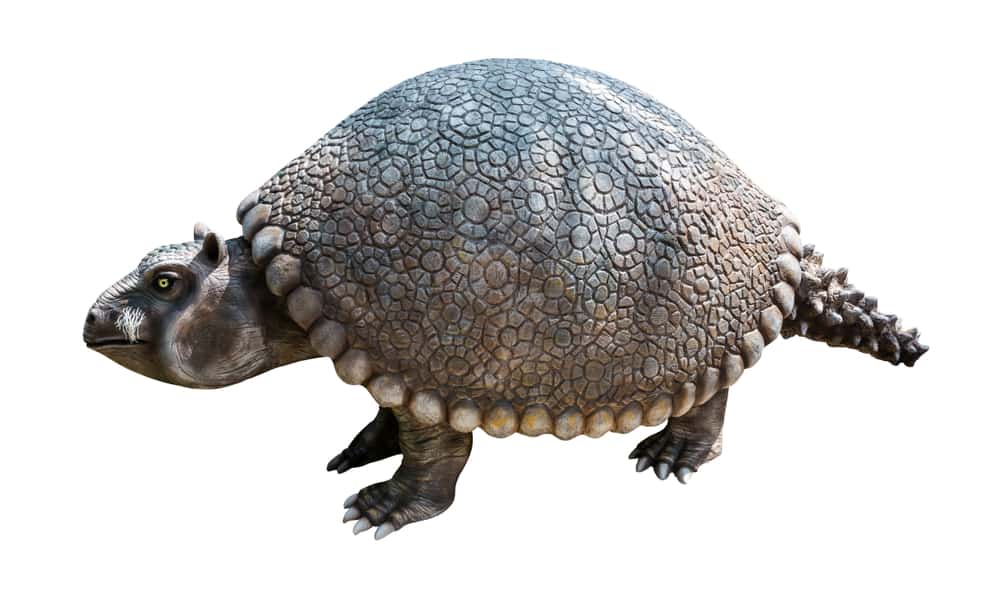
Glyptodon was a genus of large, heavily armored mammals of the subfamily Glyptodontinae, relatives of armadillos, that lived during the Pleistocene epoch.
©YuRi Photolife/Shutterstock.com
The Northern Glyptodont was a species of large, herbivorous armadillos that lived in North and South America millions of years ago. It was part of the glyptodont genus and had an armored shell made up of hundreds of interconnected osteoderms (essentially skin scales). It was one of the largest glyptodonts ever to live and was around 2 meters long and weighed up to 400 kilograms. They were primarily grazers, but also had a mixed diet of fruits and other plants, and lived on open grasslands.
The armor of the glyptodont could protect it from predators, such as the saber-tooth cat, the bone-crushing dog, and the giant bear, which also lived during the time of the glyptodont. They likely went extinct as a result of climate change or human interference.
6. Stellar’s Sea Cow (Pleistocene – C. E. 1768)
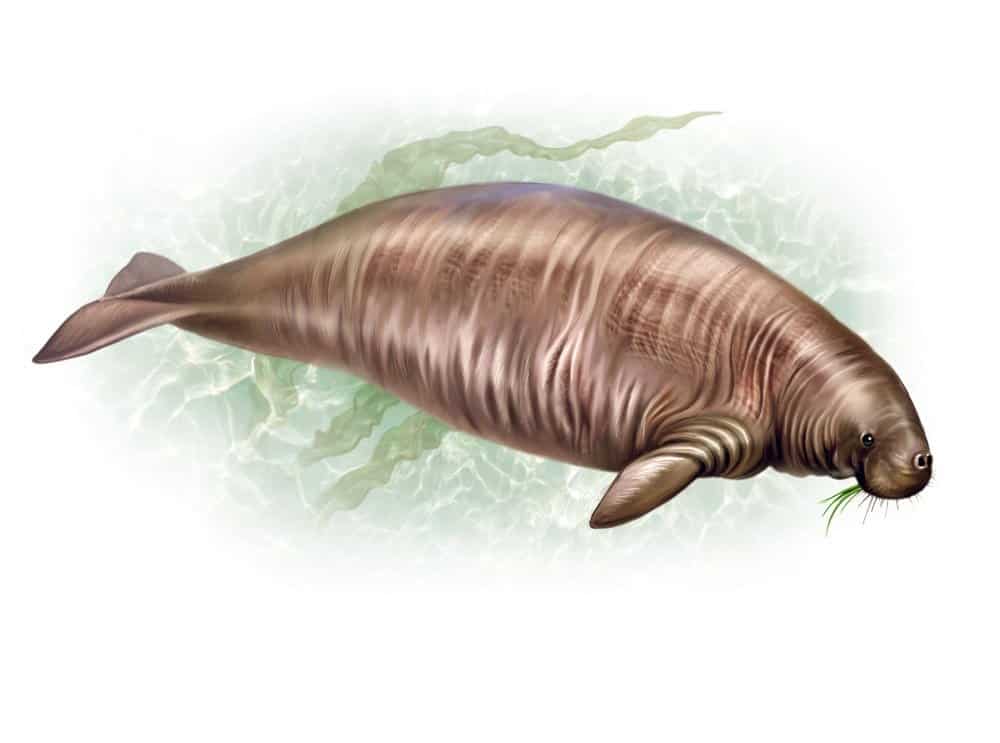
Stellar’s sea cows were massive relatives of the manatee that could reach 22,000 lbs.
©Liliya Butenko/Shutterstock.com
Steller’s sea cow was a large, herbivorous marine mammal that lived in the North Pacific Ocean. It was first described in 1741 by Georg Wilhelm Stelle who encountered the species while exploring the Bering Sea. The sea cow was the largest known member of the order Sirenia and is very closely related to manatees in appearance and as a part of the evolutionary tree.
At full adult size, the Steller’s sea cow could grow up to 9 meters (30 feet) in length and weigh as much as 10 tonnes (22,000 pounds). It had a slow metabolism, a large body, and a sluggish lifestyle, which made it an easy target for hunters traveling across the Bering Strait, which ultimately resulted in its demise. The Steller’s sea cow was once abundant in the North Pacific, but it became extinct within just 27 years of its discovery by humans. Overhunting by sailors and fur traders was what ultimately led to the sea cow’s extinction, as they hunted the species for food and fuel.
7. Woolly Mammoth (0.40–0.0037 MYA)
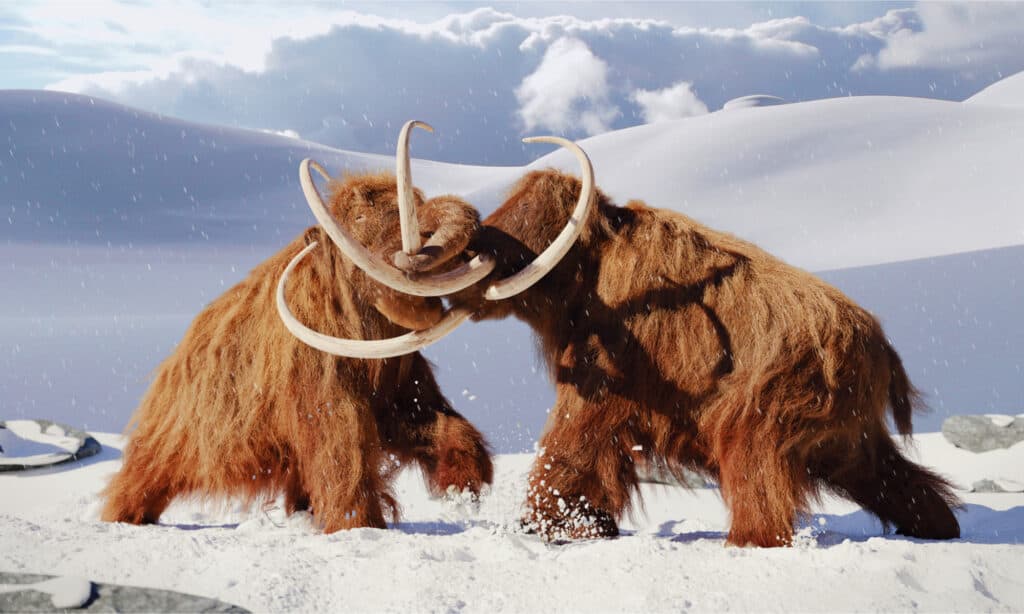
Woolly mammoths are related to
elephants
but adapted to the cold weather of an ancient climate system.
©Dotted Yeti/Shutterstock.com
There are few North American mammals as iconic as the woolly mammoth! The woolly mammoth was a species of mammoth that lived during the Pleistocene epoch, approximately 4,000,000 to 10,000 years ago. They were found across much of the northern hemisphere, from northern Europe and Asia to North America. The Woolly Mammoth was one of the last in a line of mammoth species and lived during the last ice age across the region. As such, the woolly mammoth was well-adapted to the cold and had a thick layer of shaggy fur and an underlayer of insulating fat.
Despite their adaptations to the cold, the woolly mammoth’s population declined and eventually went extinct. The exact cause of their extinction is still a subject of debate, but it is thought that overhunting by humans and environmental changes, such as rising temperatures and a reduction in food sources, played a significant role. Combined, the woolly mammoth just couldn’t make it (but it may be making a comeback)!
8. American Lion (0.34–0.011 MYA)
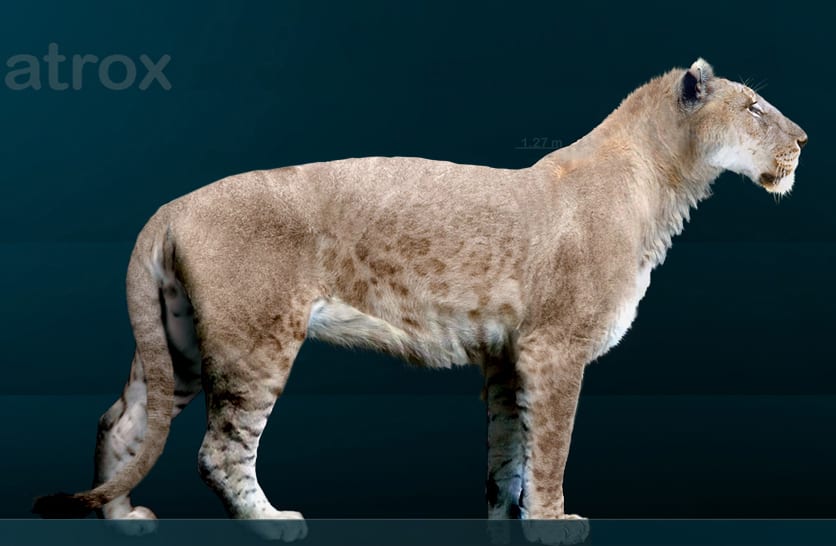
American lions were 25% larger than African lions.
©Sergiodlarosa / CC BY-SA 3.0 – License
The American Lion was a big cat that lived in North America during the Pleistocene and Holocene epochs, about 340,000 to 11,000 years ago. It was extremely large, about 25% larger than modern lions, and lived in savannas and grasslands like African lions do today. American lions likely preyed on deer, horses, camels, tapirs, bison, mammoths, and other large mammals, many of which have gone extinct as well. They probably used caves for shelter during cold weather and might have lined their dens with grass or leaves to help keep them warm.
There haven’t been a lot of lion bones found in places like the La Brea Tar Pits, which could suggest they were extremely intelligent. The American lion went extinct along with much of the Pleistocene megafauna during the Quaternary extinction event, and human predation may have also contributed to its extinction since bones have been found in ancient trash heaps.
9. North American Saber Tooth (2.5–0.01 MYA)
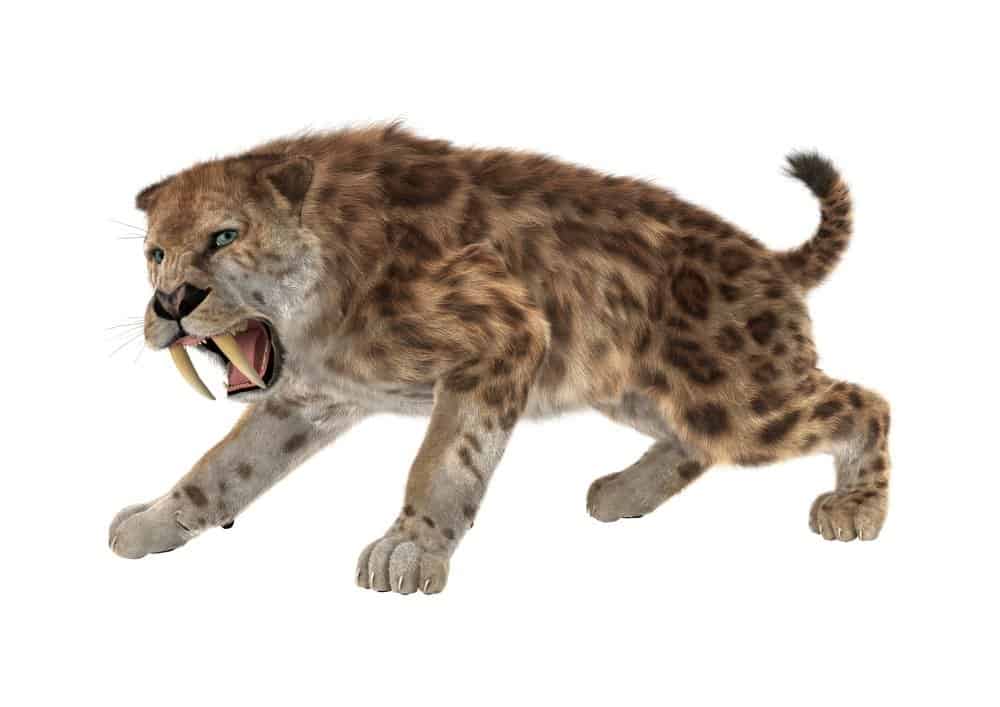
Saber-toothed cats were some of the most muscular cats to ever live.
©Valentyna Chukhlyebova/Shutterstock.com
Another famous ice-age predator is Smilodon, more commonly known as the saber-toothed tiger, although it’s not all that closely related to tigers. Three species of Smilodon are recognized: S. gracilis, S. fatalis, and S. populator. Smilodon was more well-muscled than any modern big cat and had huge front legs and long, slender upper canine teeth (hence the name). S. gracilis was the smallest species, weighing 55 to 100 kg, while S. populator from South America was the largest, weighing 220 to 436 kg. Smilodon preyed on large herbivores such as bison and camels.
Scientists are divided on whether Smilodon lived a social or solitary lifestyle. Smilodon probably lived in closed habitats like forests and bushlands and is believed to have gone extinct along with the other megafauna in the Americas about 10,000 years ago. Like most other animals from this period, humans likely played a role in the extinction of Smilodon as well.
10. Atlantic Gray Whale (Late Pleistocene–18th Century)
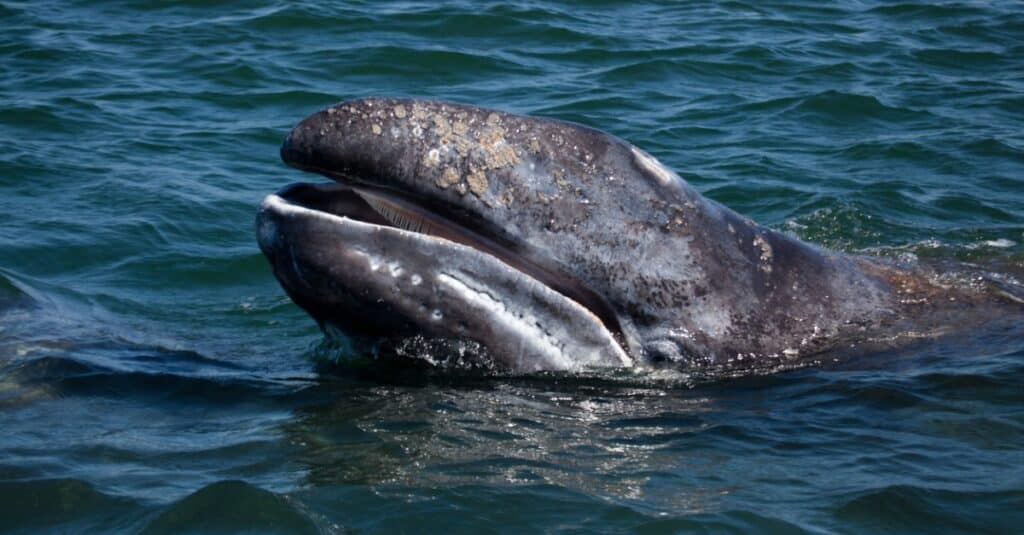
The Atlantic gray whale was hunted to extinction in the 18th century.
©Mogens Trolle/Shutterstock.com
It’s easy to forget, but whales are mammals too! Gray whales are still alive today, but the Atlantic populations were hunted to extinction in the 18th century. The “scrag whale”, described by early whalers and reportedly hunted in New England and Iceland, is believed to have been the gray whale. While the exact cause of extinction is unknown, commercial whaling in the Mediterranean basin and elsewhere may have contributed to the decline of the Atlantic gray whale population.
Of all of the animals on our list, the Atlantic gray whale is the only one that may not actually be totally extinct! A strange sighting occurred in 2013 after tour boats off the coast of Africa saw what looked like a gray whale breach, despite the whale being extinct for hundreds of years. Further research did confirm that it was a gray whale that was seen, although it seems to have been a Pacific gray whale that had made a new home in the Atlantic. As climate change continues to reduce the range of the Arctic Ocean and warm the oceans, it’s possible that the Pacific whales will once again inhabit the Atlantic, reestablishing a population of gray whales in the region.
Honorable Mention: Other Animals in North America That Went Extinct

The Kauai `o`o honeyeater was a songbird that was endemic to the island of Kauai, in Hawaii.
©Robert Shallenberger, Public domain – License
Unfortunately, animals all over the world are not only in danger of extinction but are increasingly being added to the list of animals that have died out. From the Tasmanian Tiger to the Dodo Bird, these beautiful creatures are now only available to us in pictures.
In North America, there is an abundance of mammals and fish alike that until fairly recently were once plentiful and are now no longer in existence. Here are a few more animals in North America that either went extinct or are believed to have gone extinct due to minimal to no sightings withing the past few years:
- Kauai `o`o (honeyeater) (Moho braccatus) – endemic to the island of Kauai, this bird was formerly a member of the Australo-Pacific honeyeaters, which belonged to the family Meliphagidae. This songbird can no longer be heard in the wild and its songs can only be heard through recordings. Due in large part to habitat loss and the introduction of non-native species, the entire family was declared extinct in 2000.
- San Marcos Gambusia (Gambusia georgei) – this little fish was placed on the endangered species list in 1980 and was once endemic to the San Marcos River in Texas. It was one of the rarest animals in the river and due to drought, farming, human activities, and pollution, its numbers were significantly decreased. As the last known sighting of this Gambusia was in 1983, all evidence points to it being extinct.
- Maui ‘ākepa (Loxops coccineus ochraceus) – this is another species of honeycreeper that belonged to the family Fringillidae. Endemic to the island of Maui, they were thought to be a rare species even when first discovered in the 1800s. This bird was placed on the endangered species list and the last confirmed sighting was in 1988. By 2021, it was proposed by the United States Fish and Wildlife Service to declare it extinct.
The photo featured at the top of this post is © Sergiodlarosa / CC BY-SA 3.0 – License / Original
Thank you for reading! Have some feedback for us? Contact the AZ Animals editorial team.



